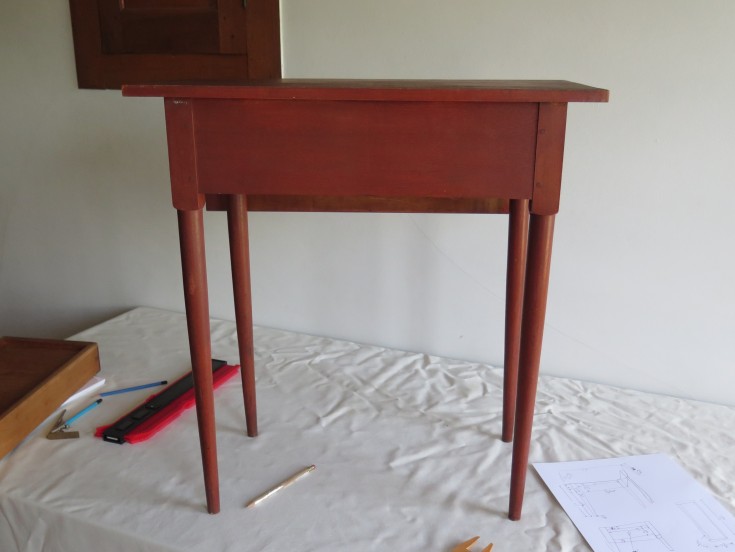Most times when you read anything written about Shaker furniture two words are almost always used to describe it, perfection and simplicity. In my opinion most Shaker pieces are neither. Over the past few years I have been able to get up close and personal with some of the most famous Shaker furniture and have found it’s construction not to be the flawless perfection most folks think it is. Anyone care to guess why? I think the reason is it was made by humans and humans screw up.
The imperfections have not made me think less of the makers or the furniture. In fact it has had an endearing effect; I can relate to it from my own efforts making furniture.
Here are a few examples from a table in the collection at Hancock Shaker Village that I measured a few years back.




The photos below are of the same table but none of these are really mistakes but rather how most vintage furniture of this era was made.



Please don’t take this post as me bashing this table or whoever it’s maker was. My hat is off to him, he had problems and worked around them. Overall this is a very nice, well made table. The leg turnings were excellent as was the rule joint on the drop leaf.
The major point I am trying to make here is don’t sweat the small stuff or mistakes you make too much. The pieces we are often trying to replicate were never perfect to begin with. Even though this table had some birthing problems it is nearly 190 years old, structurally sound and as serviceable today as when it was made. Imperfections included, it was more than good enough to survive.
You can view this table at HSV’s online collection here.
-Will Myers
Hi Will,
I like the fact that people such as yourself go to the bother of examining and posting these sort of construction details on older pieces for others to view. Reality being what it is mistakes get made. I have had to deal with a lot of ‘perfectly cut and finished’ mass produced modern furniture which inevitably fails due to poor construction detailing or simply weak joints which rely heavily on modern superior adhesives , right up to the point at which they fail. Most of it will be lucky to get twenty years, nowhere near the two hundred of the above piece. In this sort of context there doesn’t seem to have been much detriment to the longevity of the Shaker table. I have often thought the ability to overcome your own mistakes when making something sometimes has more merit then the actual end product.
LikeLike
Well said, Will. I think most 21st-century woodworkers are overly obsessed with the notion of perfection. Approach hand tool woodworking with a machine shop mentality and you set yourself up to fail. Where’s the fun in that?
LikeLike
Will, I’m glad you’re examining the shaker pieces so closely and reporting on your findings. I think the myth of perfection in antique handwork is the most difficult to combat, and leads to more frustration on the part of modern woodworkers (or ironworkers) than almost any other aspect of learning. While you highlighted some mistakes, you also showed non-mistakes that illustrate more casual standards of work, like looser dovetails, irregular planning, etc. These are often categorized as mistakes when in fact they are just everyday workmanship of the times. Thanks for pointing out these details and making the workmen of that time more human. Hopefully, it will also give new woodworkers more to look for when examining old pieces.
LikeLike
Will:
A great craftsman knows how to correct for his mistakes. It’s overdue that such close examination is being done by woodworkers since curators and academics remain indifferent to such details. Too many myths have arisen concerning the broad range of all items that fall under the Shaker label. Modern woodworkers need to see beyond the standards of industrial production in order to understand true handicraft. Great paint job, too, helping to challenge the Shake myth about using only the figure of wood as decoration.
-Mitchell
LikeLike